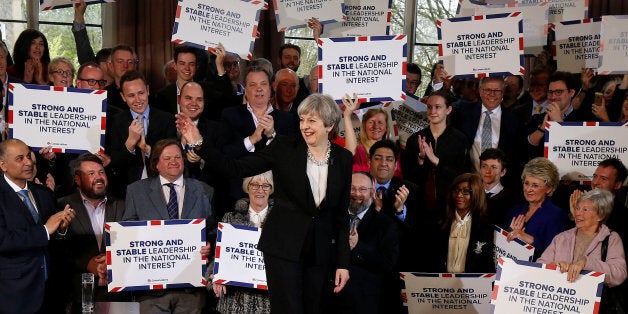
The 2017 election is already being described as a fait accompli. An enhanced Conservative majority is widely seen as inevitable. It's not. It's true that a Labour majority is almost impossible; it's been incredibly unlikely ever since the SNP's dominance over Scotland became cemented, and Labour's weak polling position only confirms that improbability. But that doesn't mean a Tory majority is inevitable: a hung parliament, out of which a non-Conservative government might arise, is a definite possibility. It would require all or most of the following factors to occur:
1) Liberal Democrats winning back 30-40 of their old seats.
The 2015 Tory majority only occurred because the Liberal Democrats were wiped out in their former South-West stronghold. There are reasons to think that it might be different this time; we are further from the coalition government, which previously cost them seats, and Brexit has provided them with a galvanising issue on which they have a clear position. A Liberal Democrat resurgence seems highly likely, and if the party concentrates its resources in the right seats, this could well take the Conservative tally down to 290-300. While in theory the Lib Dems could go into coalition with the Tories again this is in practice massively unlikely, given that they are on opposite sides of the Brexit debate. They would have little choice but to help form a parliamentary alliance that sought to prevent hard Brexit.
2) The SNP keeping its grip on Scotland
The Conservatives are hoping to win more seats in Scotland, having only one at present. But the SNP is still hugely popular, polling at around 47%. If Nicola Sturgeon's party can hold onto most of their seats that will deny the Conservatives a key opportunity for growth.
3) Ukip remaining in play
While Ukip is often depicted as a threat to Labour, in fact it tends to helps Labour hold onto seats, taking votes that would otherwise go to the Conservatives. In 2015 Ukip received 12.6% of the vote. If it takes more than 10% this time, in line with current polling, that will allow Labour to do better than it otherwise would in crucial Labour-Conservative marginals.
4) Tory turnout at a low level
People tend not to like being asked to vote too often, and the last major election, the EU referendum, was less than a year ago. This is clearly an unnecessary election, called purely for political advantage, and while supporters of opposition parties will be motivated, some Conservative voters may well choose to stay at home.
5) Labour holding onto most of its 2015 seats
Labour is unlikely to do as badly as many pundits are predicting. It received 30.4% in 2015 and one poll at the weekend put them on 29%. This is likely to rise, given that an election campaign tends to limit the possibility of infighting and imposes a higher degree of discipline on a party. On top of this, Labour has by far the highest membership of any party, and has a much clearer policy platform than in 2015, now being explicitly anti-cuts and pro-redistribution, a policy agenda that has be shown to be highly popular. While Labour is likely to lose some seats it may well be able to gain a few elsewhere if the membership is sufficiently active and targeted. So they have a good chance of ending up with roughly the same number of seats as before.
6) Some degree of tactical voting
There are around 40 seats where the combined votes of centre left parties were higher than the Tory majority in 2015. Tactical voting can ensure they stay out of Conservative hands. A full blown electoral pact is not going to happen. All that is needed is some tactical nous by local parties and voters - Lib Dem supporters choosing to vote Labour in certain areas and vice versa.
If all of this played out, we'd have a potential Labour-Lib Dem-SNP alliance of around 328 (plus a handful of Green, Plaid Cymru and SDLP MPs), versus a Conservative bloc of 300. Of course forming a coalition government would be fraught with difficulties. But there are plenty of possibilities: a soft brexit involving staying in the single market, overturning the worst of the cuts to public services, properly funding the NHS, electoral reform and restoration of universal benefits. There's no need for these parties, and their voters, to love each other; they just need to be willing to take on the Tories, and seek to replace them with something better.
